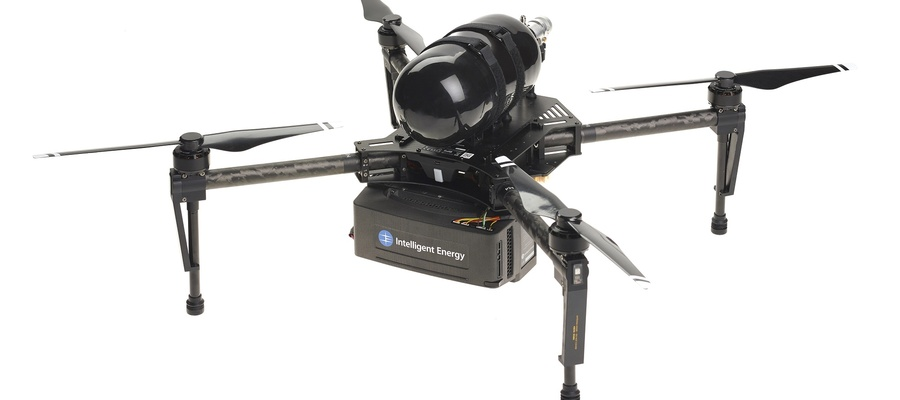UAVs and UUVs
Justin Lewis
Any aircraft without an onboard, human pilot qualifies as an Unmanned Aerial Vehicle (UAV), commonly referred to as a drone. Initially developed by the military, developments in drone technology have led to applications for commercial, scientific, recreational, and agricultural sectors, among others. Depending on the application, drones take on different shapes and sizes to improve efficiency and operation. While UAV technology has advanced substantially, fuel cells and hydrogen energy have shown that further improvements can be made to performance, efficiency, and run time.
Many UAVs, often smaller drones, are powered by lithium-ion batteries offering 100% throttle flexibility, low heat and noise signatures, and flexibility in design and operation to improve efficiency. However, these battery-powered systems require long charging times, feature short operation time, and are limited in their ability to carry cargo and equipment. On the other hand, fuel cell-powered systems can fly much longer and can be refueled quickly to return to flight.
At last September’s InterDrone exhibition in Las Vegas, two FCHEA member companies showcased hydrogen fuel cell powerpacks for commercial UAVs. Doosan Mobility Innovation’s fuel cell powerpack is refueled using a single, detachable hydrogen container, and the powerpack can keep UAVs flying for two hours on a single charge of hydrogen.
Doosan displays a UAV with the company's new hydrogen fuel cell powerpack at InterDrone 2018. Source: Doosan Group
Intelligent Energy's new 800W Fuel Cell Power Module (FCPM) was shown with the company's 650W model, which was unveiled at the 2017 InterDrone exhibition. The 800W FCPM is 10% more power dense than the 650W model, and multicopter UAVs will be able to carry one kilogram of cargo for two hours, or two kilograms for one hour. Intelligent Energy will also work with customers who have the capability to combine two of the 800W models to provide 1.6 kW of continuous power. The 800W product is certified for use in the United States and European Union and is available to pre-order now, with first shipments planned for January 2019. The FCPMs use Intelligent Energy’s Air Cooled PEM fuel cell technology and run on hydrogen and ambient air.
Intelligent Energy’s 650W multicopter UAV model. Source: Intelligent Energy
Building on the success and interest in UAVs, FCHEA member Alakai Technolgies is going one step further, developing a hydrogen fuel cell-powered, four passenger, long-duration, all-electric vertical takeoff and landing (eVTOL) aircraft in 2019.
In addition to UAVs, the development of underwater drones, Unmanned Underwater Vehicles (UUVs), has targeted various commercial, research, and military applications due to their ability to reach areas deemed too dangerous, expensive, or difficult for manned vessels. Untethered UUVs require an onboard power supply sufficient for propulsion while powering sensors, communication equipment, cameras, lights, and other auxiliary functions. Currently, lithium-ion batteries are used as this onboard power supply. However, as the vessels get larger and the desired ranges get longer, batteries are unable to meet the requisite power requirements. Hydrogen powered fuel cells provide the power density necessary to meet these requirements while also minimizing the impact on the marine environment with no emissions, noise, or vibrations.
The United States Office of Naval Research and the U.S. Naval Research Laboratory have partnered with FCHEA member General Motors to develop fuel cell-powered UUVs.Prototypes have passed the Navy’s tests, showing reliability, high energy density, and cost-effectiveness. Ultimately, the Navy wants the vehicle to be capable of operating for 60 days without refueling, which hydrogen powered fuel cells can provide.
File photo of a UUV operated by the United States Navy. Source: Office of Naval Research
As the uses for unmanned vehicles - both aerial and underwater - continue to grow and develop, hydrogen powered fuel cells offer reliability, endurance, and performance for even the most challenging environments and applications.



